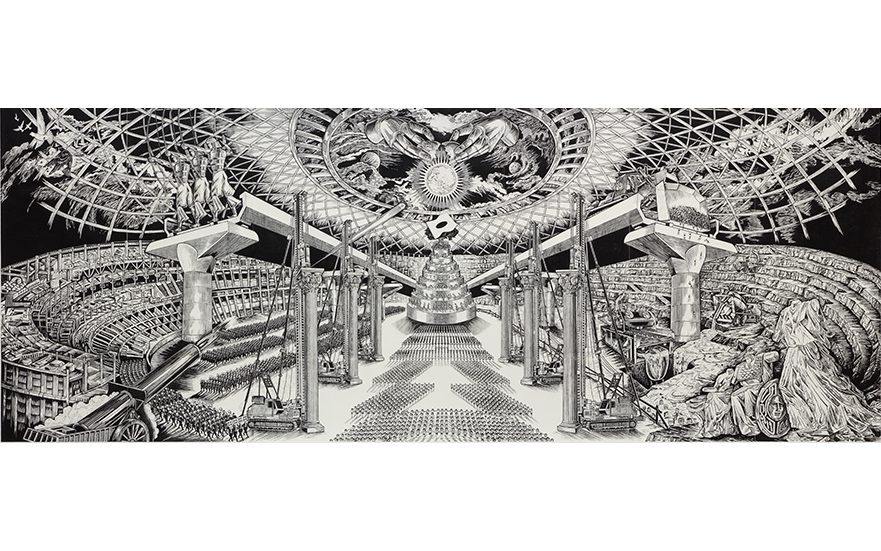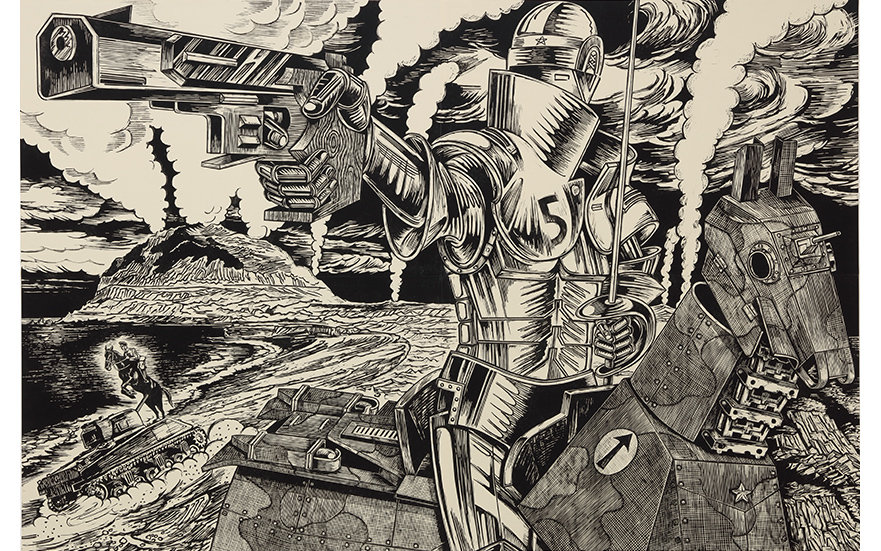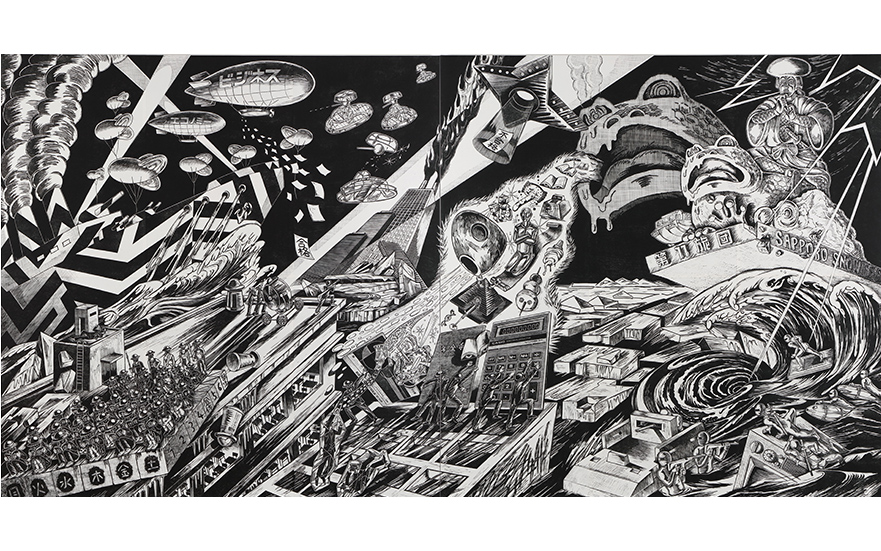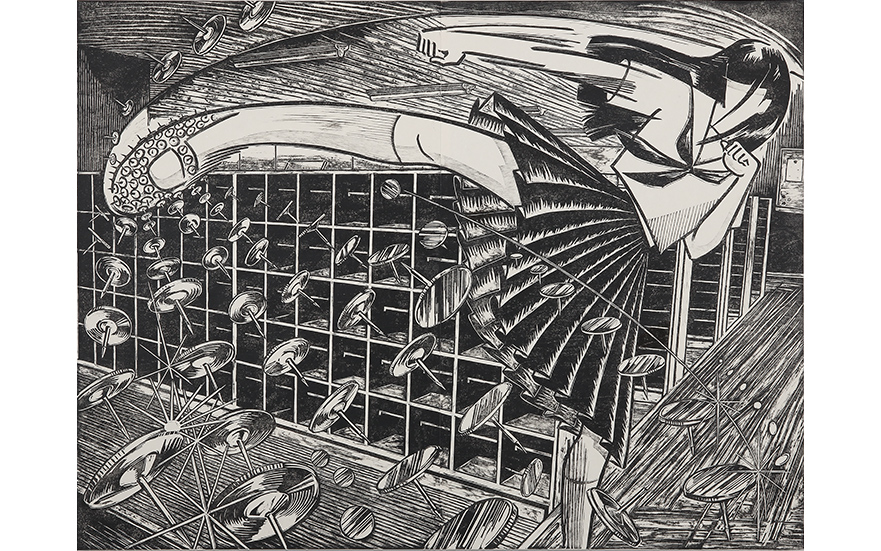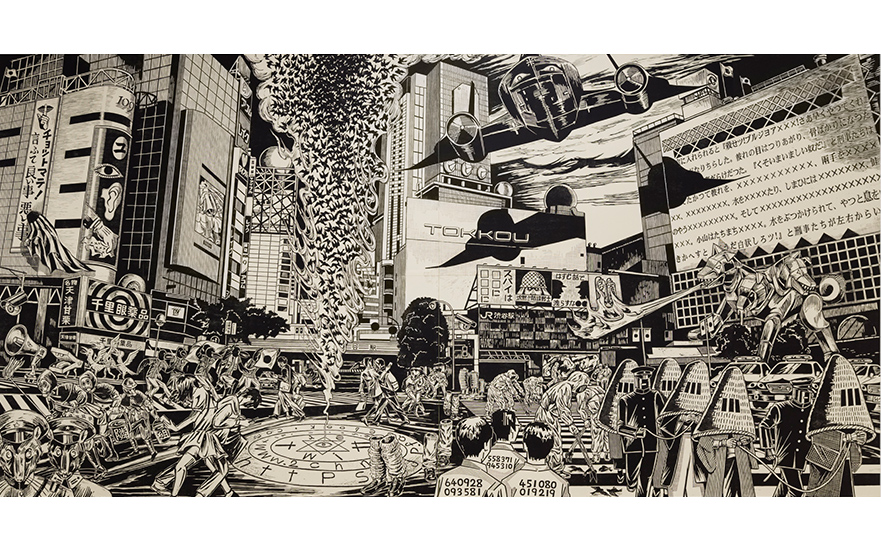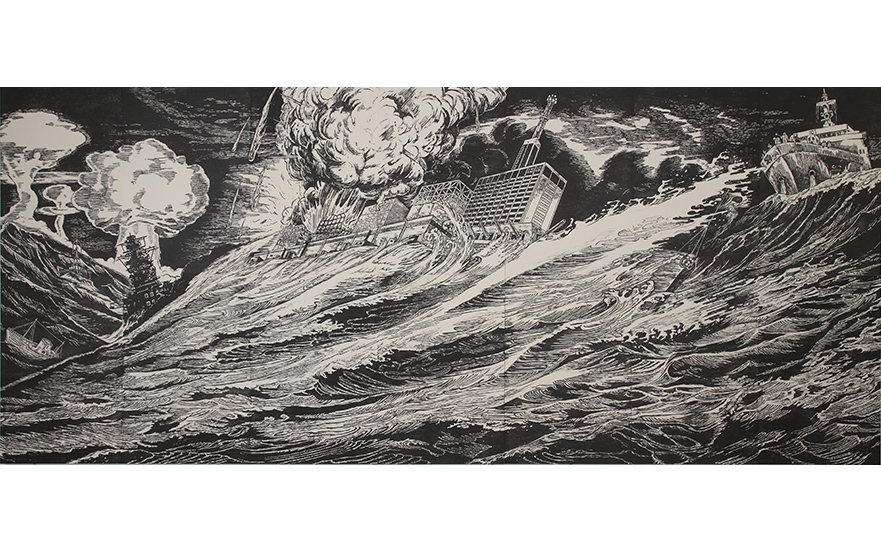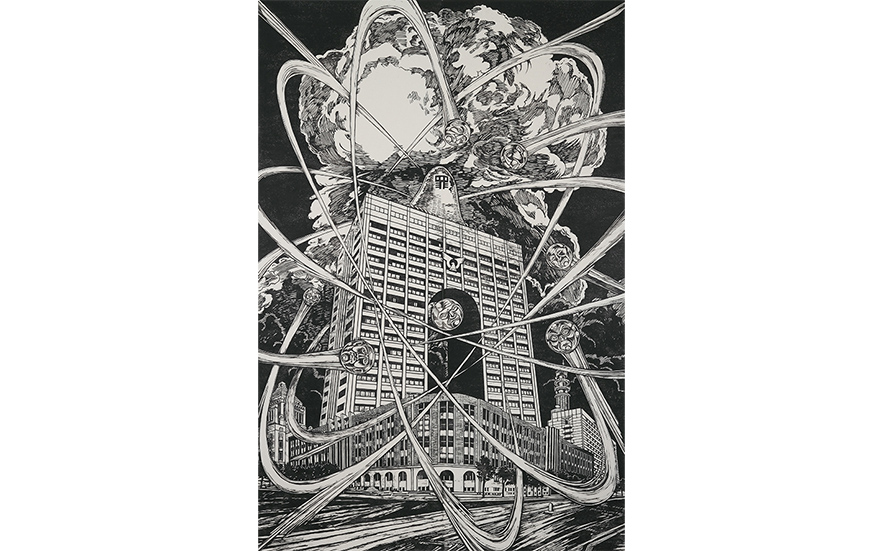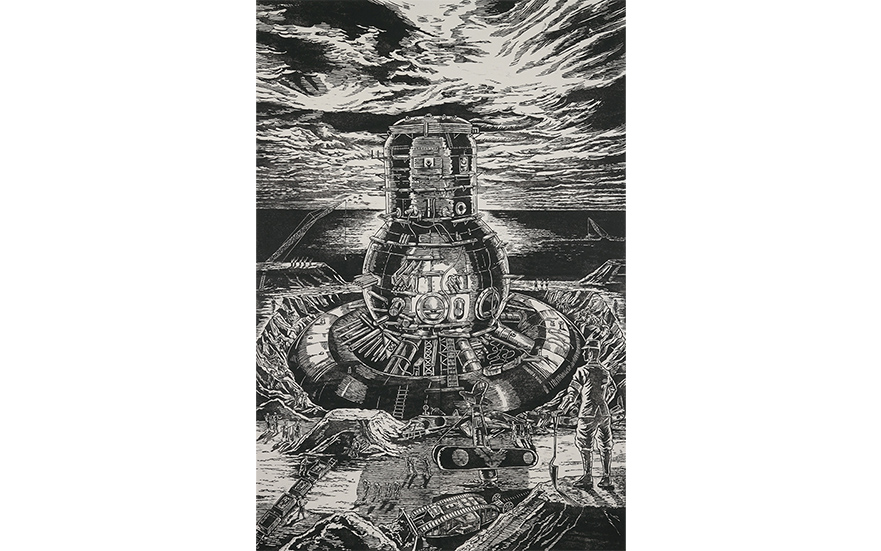Interview with an award winner
TCAA 2019-2021
KAZAMA Sachiko
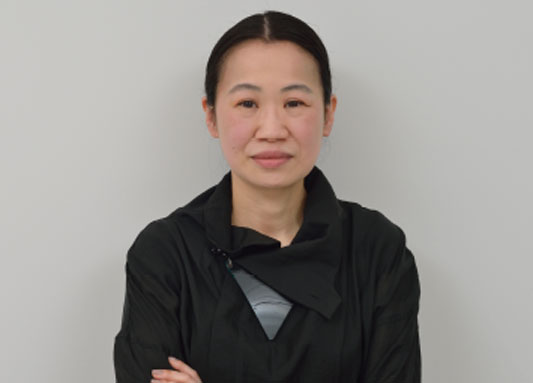

Jet black woodblock prints filled with dark looming clouds: Using this technique, she probes the sources of contemporary social phenomena, sounding a warning bell by exploring the past, a present filled with a sense of crisis, an uncertain future. Kazama Sachiko continues to create works based rooted in her distinctively critical temperament. Kazama’s readiness to receive this award, which supports her activities for two years, is no trifling matter. She says forcefully, This generous support for my works, which seek to enlighten society, inspires, I feel, hope for the arts, the ultimate bastion that protects the spirit of freedom.
When the jury Members who judged the submissions visited her studio, a Japanese-style house that is both residence and studio, she selected old books from the huge quantity of creative materials that she has collected and explained concretely their significance for her work. Behind her style, which mimics and transforms a manga-like touch lies a drive to deepen her understanding, backed by detailed research, she explained. In producing my work, a fresh, lively air, very different from the view of history that we receive now, that lodges in old books, is vital. Seeing non-Japanese curators respond to my work with the same sense of danger, of ‘Hey, this is risky,’ as myself was quite positive.
Into the woodblock print hanging on the wall, she had carved the words “Sturm und Drang,” reminding herself not to forget the fierce winds and angry waves of passion that she had chosen 25 years earlier to inspire her. Seeing these words, the jury Members felt an instant rapport with her art.
The world depicted in Kazama’s work is one in which, whatever the subject, the violence of her portrayal comes close to exaggeration. At this moment when technology makes it easy to create a sense of immersion and excitement, the passion and power that she brings to the traditional flat surface of her black woodblock prints is enlightening. Her visual control of technique is one of the reasons her work is so highly regarded. She herself says, My desire to show something overflows, I am always going too far. The non-sense of that excess and the comedy to which it is connected are deliberate. Contemporary art as a mirror of society is too stylish. My taking full advantage of the impact of black and the carver’s touch, the wood block prints defining features, may be connected with the exaggeration typical of romanticism. Use of a materials that unsettle the viewer is a good thing, I believe.
This process by which subjective anger and illusion induced by the darkness of history and society are sublimated through use of a bird’s eye perspective into socially conscious art is Kazama’s alone. She says, I treasure the impact and hatred I feel instinctually when I learn about historical facts. By gathering information from old books, I breathe in the atmosphere of that time and place along with the facts. I am struck by the connections between desire and trivial affairs in which human actions are rooted. Repeatedly encountering the idiocy of repeated defeat, my excessive anger turns into laughter. Even in the world of Noh, in which I have recently become interested, it is only insofar as the beauty of the whole is rooted in malice and lingering attachment that the art becomes accessible to today’s audiences. In this I find a hint about the way in which hatred can be transformed into artistic expression.
In 2018 Kazama’s work was presented in a solo exhibition titled “Dyslymplia 2680” at Maruki Garelly For Hiroshima Panels. During the four years in which she was developing the concept, she conducted research using prewar materials to create her largest and most grotesque woodblock print, depicting a dystopian nation based on eugenics. In it we see a ceremony called Dyslympia held in a near future city, in a stadium where truth and falsehood are mingled in a mixture of bitter sarcasm and humor. She says,
To me the present is a dystopia. The vilification found in Internet news comments makes this a truly hellish world, in which mainstream thinking seems to be to ruthlessly eliminate the weak. My work began with a negative reaction to this situation. At the same time, however, I had a strong desire to preserve the artist’s desire to express an egoistic sense of beauty. The woodblock print is a form that is extremely easy to leave to the next generation. If humanity still exists a century from now, it may be in a world shaped by AI unmoved by human thinking and feeling. My work is harsh because I want those people to feel ‘It’s so harsh because it’s so ominous.’ That’s my ambition.
The incantatory character that will fan indignation and anger and fuel the the imaginations of future generations permeates the world of Kazama’s art. We see much to look forward to in the way in which she probes the origins of the ominous happenings of today’s world, stirring up uneasiness about a dark future.
interview, text: SUMIYOSHI Chie
